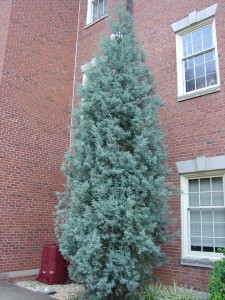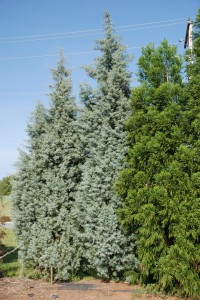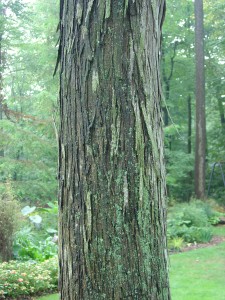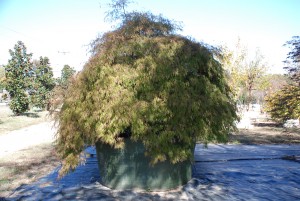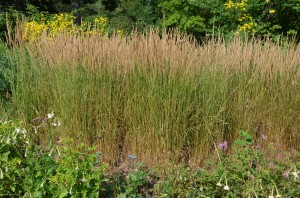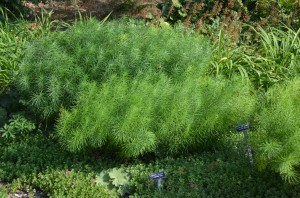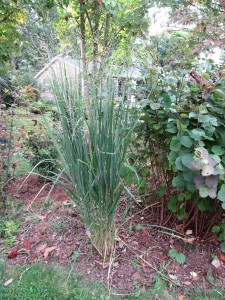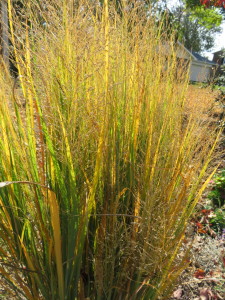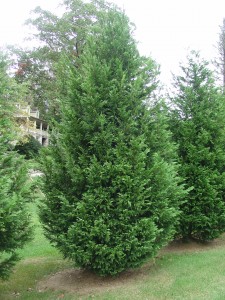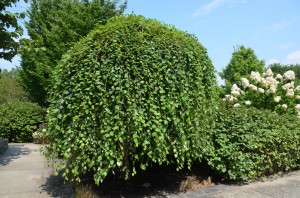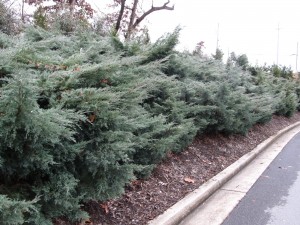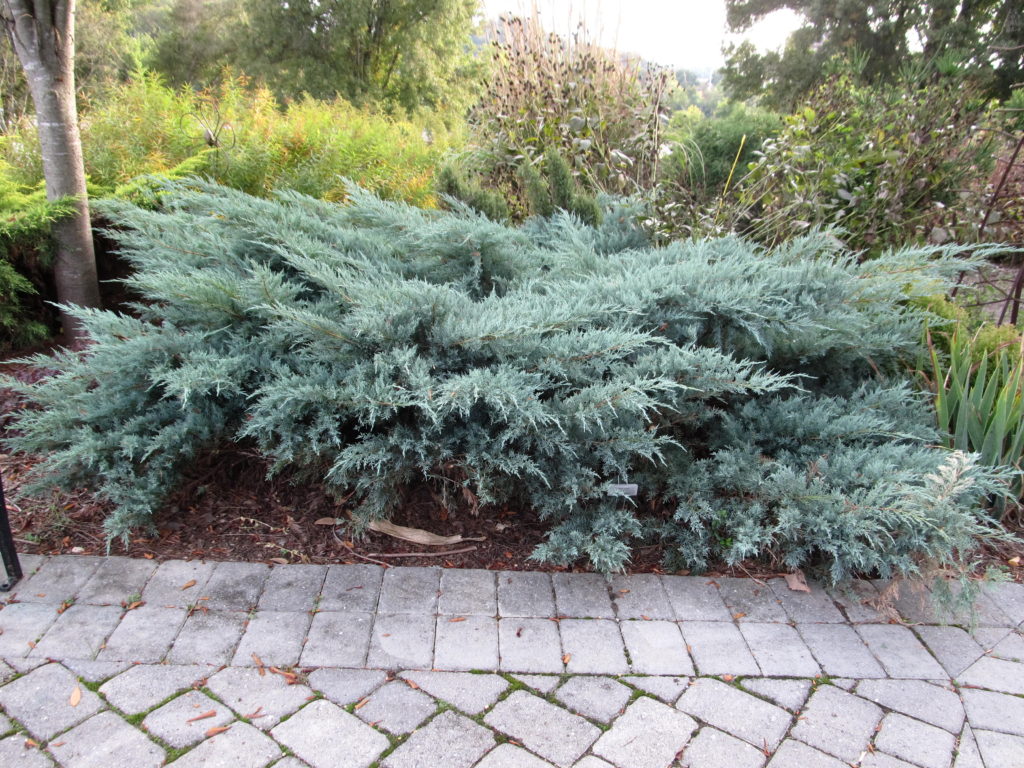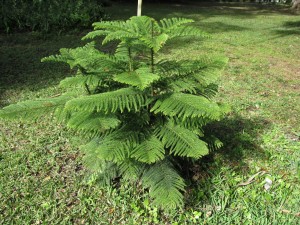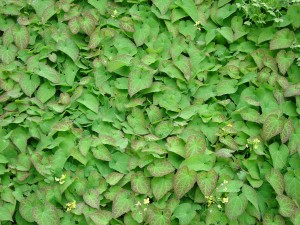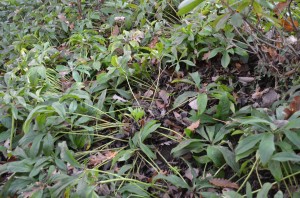Arizona cypress (Cupressus glabra) is silvery blue needled medium-sized evergreen (USDA hardiness zones 6 to 9). This southwest U.S. native demands full sun and excels in droughty, infertile, and well-drained soils. Conversely, Arizona cypress does not tolerate shade, poor air circulation and flooded soil. Arizona cypress is mostly disease and pest free unless too crowded in a landscape.
‘Blue Ice’, ‘Blue Pyramid’, and ‘Carolina Sapphire’ are three leading cultivars. The latter cultivar exhibits a silvery needle fine foliage, but may be northern hardy to zone 7. Depending on the cultivar planted, this upright branched pyramidal conifer grows rapidly to 30-50 feet high and 15-20 feet wide. An older specimen displays a rugged or furrowed trunk with reddish brown bark, a showy contrast with the silvery to steel blue foliage.
Whether planted as a single specimen or with several grouped together as a privacy fence or windbreak, the metallic needle foliage offers different foliage color with other conifer species. While needle color of some conifers may turn bronze or brown in winter, the silvery blue needle color seems to intensify.
Fall thru early spring are ideal times to plant Arizona cypress. Planting on a slope is highly recommended to avoid soils from becoming too soggy. This evergreen is not finicky regarding soil fertility or pH. Arizona cypress exhibits excellent drought tolerance once established for two years. Pruning is rarely necessary except to remove a wayward or broken branch.

